Impunity
It was only six months after the murder of prominent editor Gauri Lankesh in the heart of tech-city Bengaluru in September 2017, that one of the accused, the suspected supplier of firearms was nabbed. The actual shooters are still at large.
Two days before the UN International Day to End Impunity for Crimes against Journalists (IDEI) on November 2, 2017, Kshitij Kumar, a journalist with the online portal The Quint, received a terse ‘apology’ of sorts from the Delhi Police: “Today was particularly bad because of stone pelting injuries. It was a mix-up, we are sorry.” The journalist had spent over two hours in a police lockup in New Delhi, after having had his footage of a slum demolition forcibly deleted.
This incident was relayed by his colleague Meghnad Bose at a meeting to observe IDEI, hosted by UNESCO in New Delhi. Bose himself was assaulted by the Delhi police in May 2017, while covering student protests. “If this is our fate in India’s capital, what must be happening to journalists in small towns and cities?” he asked.
However, it is not just in small-towns and villages that investigations are tardy. It was only six months after the murder of prominent editor Gauri Lankesh in the heart of tech-city Bengaluru in September 2017, that one of the accused, the suspected supplier of firearms was nabbed. The actual shooters are still at large.
Given this attitude of the law-enforcers, the struggle for justice is a long and painful one for the survivors and for families of those killed, their colleagues and journalists’ organisations. For some, there is no end to the punishing process. For others, the process doesn’t even begin.
When journalists dissent, uncover corruption or record patently illegal acts, they become targets. In India, over the last two decades, more than 30 journalists have been killed as a direct result of their professional work. The rate of conviction continues to be near-zero and the long road to justice is fraught with poor investigation, political pressure that often lets accused abscond or roam scot free and interminable trials that have not secured a single conviction to date. Ultimately, the incidents of crimes against journalists occur with impunity because those in power know they can get away with it.
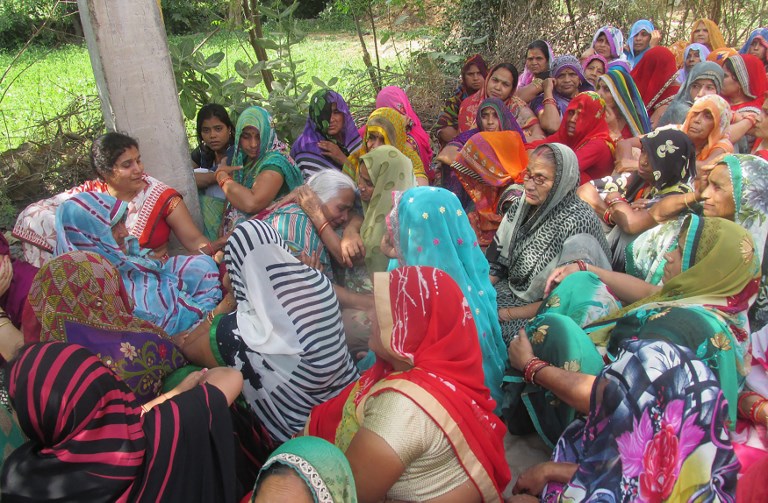
This photo taken on March 26, 2018 shows relatives of Indian journalist Sandeep Sharma grieving following his death after being mown down by a truck in Bhind in Madhya Pradesh state. Amid growing outrage over the latest murder of a journalist in India, police have arrested a truck driver accused of killing Sandeep Sharma over his investigative reporting into the coun- try’s ‘sand mafia’. The television journalist was mown down by a truck as he rode a motorcycle on March 26 -- the second hit and run killing of a journalist in 24 hours. Credit: AFP
There is no quick fix. We know impunity is a warning of the breakdown of rule of law and democracy and contributes to the increase in murders and attacks. When journalists are threatened or attacked, the support of their colleagues and their employers will go a long way to combat impunity. We stage protests and release reports offering recommendations for change. We campaign to draw global attention to the weaknesses and failings of governments, courts and state forces in tracking down and prosecuting perpetrators. We follow cases and call on governments and their leaders to bear responsibility for the deathly smear that blights countries like Afghanistan, Bangladesh, Pakistan and India.
In countries like Nepal and Pakistan, effective media monitoring networks keep tabs on violations as they occur and continue to push for meaningful change. In Pakistan, strengthening the capabilities of journalists to operate with more preparedness about risks, are beginning to make impact but progress is still painfully slow. In Afghanistan, efforts to bring the government to the table and meaningfully commit to making journalists safer are yielding some gains. Sadly however, in Bangladesh, India and the Maldives, the lives of media workers’ bear little regard in the wider state interests. So long as that climate remains unchanged, the numbers mount.
Away from the reports and indices, the families do not give up their struggle for justice. Anshul Chhatrapati, 35, son of Ram Chander Chhatrapati, a journalist based in Sirsa, in Haryana state in North India, has been fighting the case against his father’s killers for 16 long years.
PAKISTAN: TIME FOR A MODEL LAW
Overwhelming impunity crimes against journalists continues to characterise Pakistan’s media environment. Not only was there no conviction of any of the attackers of at least 115 cases of journalists killed in Pakistan since 2000 that remain unsolved, in one of the cases where conviction was achieved at the primary stage of justice, there was a slide. Aminullah Niaz, the alleged killer of Jang daily journalist Ayub Khattak, who was murdered in 2013, was in 2017 exonerated by the Peshawar High Court and set free. This happened one year after he was found guilty of Khattak’s murder and awarded
a life sentence by a lower court in March 2016.
In only two other cases have convictions been achieved – in the cases of murders of Geo News reporter Wali Khan Babar and Wall Street Journal reporter Daniel Pearl. In both cases those convicted have gone into the appeals process and remain formally unpunished, making Pakistan one of the countries with the poorest records against impunity.
For some years the movement in Pakistan for enacting a special legal framework on improving safety and security of journalists has intensified.
The media stakeholders, particularly journalists and information practitioners, have continued to demand a comprehensive legislation to combat impunity for crimes against journalists. Responding to these demands, the federal government initiated the process to draft a law on journalists’ safety in 2015.
Building upon the earlier drafts – one prepared by a Senate Standing Committee, headed by Senator Raja Zafarul Haq, in 2011, and another submitted by Sahibzada Tariq Ullah and others in National Assembly in 2014 – the government drafted the Journalists Welfare and Protection Bill, 2017. This bill was criticised and rejected by the stakeholders, including the Pakistan Federal Union of Journalists (PFUJ), which represents Pakistan’s 20,000 journalists.
Others, including the Pakistan Broadcasting Association (PBA) and All Pakistan Newspapers Society (APNS) also did not support the bill for various reasons. Upon an initiative from the Senate in November 2017, a new alternative draft model law on journalists’ safety was developed in collaboration with the PFUJ, the media associations and the government through a subcommittee of the Senate’s Standing Committee on Information and Broadcasting in January 2018. The draft, however, failed to be tabled as three-yearly Senate elections intervened in March 2018. The new Senate is expected to table this long-awaited legislative draft and adopt it later in 2018.
SRI LANKA: LETHARGIC INVESTIGATIONS
Progress around ending impunity for media rights violations, has been slower than expected. The United Nations High Commissioner for Human Rights pointed out in his report to the 37th session of the UNHRC that Sri Lanka’s “authorities have not yet demonstrated the capacity or willingness to address impunity for gross violations and abuses of international human rights law and serious violations of international humanitarian law”. It was noted that “the High Commissioner remains gravely concerned that, two and a half years into a reconciliation process, his Office continues to receive reports of harassment or surveillance of human rights defenders and victims of human rights violations.”
In November 2017, emphasising that justice has not been delivered for the targeted crimes against journalists in Sri Lanka, the Free Media Movement urged the President of Sri Lanka to appoint a Presidential Commission of Inquiry with a comprehensive mandate for investigations.
On a positive note, during the period under review, notable progress was reported in the investigation into the murder of editor Lasantha Wickrematunga, outspoken critic of the Rajapaksa rule. He was assassinated on January 8, 2009.
As part of the investigation, Senior Deputy Inspector General of Police Prasanna Nanayakkara was arrested on February 14, 2018 for allegedly instructing his juniors to block the investigation into Lasantha’s murder and destroy evidence gathered from the crime scene.
The involvement of military intelligence in the killing has come to light. Media reported that the then Head of Military Intelligence, Kapila Hendavitharana, was heading a killer squad and he reported directly to the then Defense Secretary Gotabhaya Rajapaksa. Several other high-profile arrests were on the cards, but the investigation appears to have lost steam.
In another positive development, the former Military Intelligence Director and Chief of Staff of the Army, Major General (Retired) Amal Karunasekara was arrested in 2018. He is accused of the abduction and assault of journalist Keith Noyahr, then defence correspondent of The Nation. All these arrests have come under strong criticism by the war-triumphalist Sinhala nationalist forces and media. They accuse the investigating authorities and government of “betraying” war heroes to appease the international community and Tamil diaspora.
Editors of Tamil newspapers based in Jaffna were unanimous in their condemnation of the government’s lethargic approach to investigations in to the abductions and killings of Tamil journalists during the last stage of war. “We are happy about the investigations on the abduction of Prageeth Eknaligoda, murder of Lasantha Wickrematunge and other journalists. That is a positive development. But why is there total silence on killings and attacks on journalists and media in Jaffna?”, says Thevanayagam Premanath, editor of Jaffna’s largest selling daily’s. 2017 has not seen any investigation into killings of Tamil journalists in Sri Lanka.
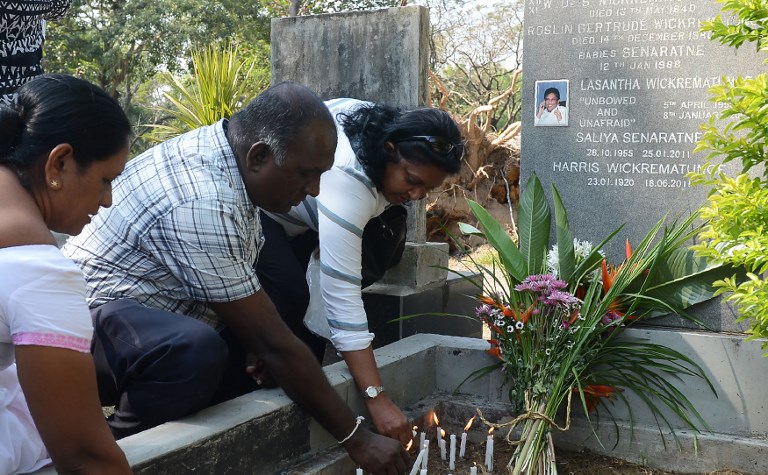
Sri Lankan mourners light candles at the grave of the editor Lasantha Wickrematunga on the ninth an- niversary of his murder in Colombo on January 8, 2018. The family of the assassinated editor criticised President Maithripala Sirisena’s government for failing to prosecute the perpetrators nine years since the internationally con- demned murder. Wickrematunga was stabbed to death as he drove to his Sunday Leader office near Colombo days before he was to testify in a corruption case involv- ing the then defence secretary Gotabhaya Rajapaksa. Credit: Lakruwan Wanniarachchi/AFP
In June 2017, well-known journalist Poddala Jayantha returned to Sri Lanka to make a complaint with the CID requesting an investigation in connection to his abduction during which he was brutally tortured. He was abducted on his way home, tortured, and left on the road to die in June 2009. His limbs were broken and he was suffocated with his hair. No progress has been reported with regard to this investigation.
Investigation in to the killing of journalist-cartoonist Prageeth Eknaligoda did not seen much progress in 2017. The sustained campaign for justice has brought out some truths about the disappearance of Eknaligoda in 2015-2016. Evidence showns that Eknaligoda was taken to an Army camp following the abduction and a key witness recorded seeing Eknaligoda being questioned at the camp.
Both the Criminal Investigation Department (CID) and State Counsel leading the case on behalf of the Attorney General’s department, have repeatedly informed the Courts of the Army providing false information, denying possession of evidence, delaying production of evidence, misleading investigations and intimidating witnesses. The progress of the investigation appears to have stalled, or even moved backwards in 2017, primarily due to lack of cooperation from the Army and key suspects being released on bail a few weeks after the President publicly questioned their detention. Meanwhile Sandya Eknaligoda continues the struggle for justice, with her simple question: “Where is Prageeth?”
TAKING ON A 'GODMAN'
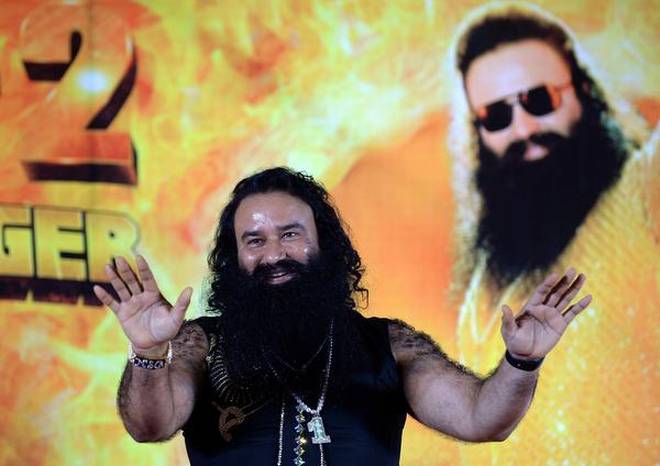
Indian chief of the religious sect Dera Sacha Sauda (DSS) Gurmeet Ram Rahim Singh. Credit: Punit Paranjpe/AFP
On August 28, 2017, Gurmeet Ram Rahim Singh, the head of a religious cult called the Dera Sacha Sauda (Abode of Real Truth) was sentenced by a special Central Bureau of Investigation (CBI) court to 20 years imprisonment for the rape of two women. Elaborate, if somewhat bizarre, security arrangements were made for Justice Jagdeep Singh, who, with his staff was flown in from Chandigarh by helicopter to the special court set up in the premises of the district jail in Rohtak, around 66 km from New Delhi. A three-tier security ring with 4,000 personnel guarded the area around the jail where Gurmeet Ram Rahim Singh was lodged. The Rohtak deputy commissioner Atul Kumar had earlier declared that shoot-at-sight orders would be issued, such was the influence of the Dera in the area (‘dera’ in Punjabi, which literally means a camp or settlement, in this context refers to a religious cult).
There was good reason for the high security. Three days before, when the court held Ram Rahim guilty of the crime, his followers went on a rampage, ransacking court premises, beating up journalists and setting fire to their outdoor broadcasting vans. Thirty-eight people lost their lives and over 250 others – including journalists – were injured in the violence. In Sirsa town, the headquarters of the Dera Sacha Sauda, curfew was imposed and an atmosphere of fear was heavy in the air.
If the district administration was caught by surprise at the scale of the violence and the savagery of the followers of Ram Rahim, one man was not. For 16 years, Anshul Chhatrapati has lived with the ever-present threat of violence as he doggedly pursued the case against Nirmal Singh and Kuldeep Singh, accused in the murder of his father, Ram Chander Chhatrapati, a highly respected journalist in Sirsa. The accused murderers are supporters of Gurmeet Ram Rahim Singh and, according to the CBI investigation, had shot Ram Chander Chhatrapati for publishing an anonymous letter about the sexual exploitation of women in the ashram of the self-styled godman.
In a case related to another murder at the Dera, on February 22, 2018, the Punjab and Haryana High Court reserved an order on a petition filed by Khatta Singh, Ram Rahim’s former driver, who was earlier a witness for the CBI. In 2011, the CBI had declared him hostile when he said his life was threatened and he could not give evidence. Now, emboldened by the conviction of the Dera chief in the rape case, he came forward to say that he wanted to give evidence in the murder of Ranjit Singh, whose killing is suspected to have been at the behest of Ram Rahim.
“Is it yet another delaying tactic? Is he genuine? What will happen to our case if his plea is accepted?” wondered Anshul. The case relating to the murder of his journalist father is at the stage of final arguments while arguments have concluded in the Ranjit Singh murder case. If the plea was accepted, the case could be delayed by another four to six months, but if it was dismissed, the order could come in a month.
Ifs and Buts. This has been the situation for the last three or four years. At every turn, some delay would push back the progress of the case.
THE WHOLE TRUTH
On October 24, 2002, Ram Chander Chhatrapati returned home early from the office where he had checked the pages of his newspaper Poora Sach (The Whole Truth).
Anshul recalls: “My father had a routine. He was very particular about proof-reading the entire paper by himself. His column ‘Off the record and on the record’, which he signed with the pen name ‘satyavadi’ (truthful) was very popular. He usually went to meet his friends in the market after the newspaper was published. On that day, my brother and sister had told him to return early because our mother was not at home.”
He returned home at around 7.30 pm. A few minutes later, someone called out to him and he stepped into the galli (narrow lane) outside the house. He was pumped with five bullets. His children ran out on hearing the shots. There were two gunmen. One ran towards a police chowki (outpost) nearby and was nabbed by the police. The other was later caught.
The children rushed their father to the local hospital and from there, moved him to Rohtak in an ambulance even as journalists and social activists in Sirsa gathered in shock and anger. He was conscious and even told the District Commissioner of Sirsa, “DC Saab, just as I told you, they came to get me.”
He clearly and repeatedly named Gurmeet Ram Rahim Singh, the head of the Dera Sacha Sauda, as the perpetrator of the attack on him. But police were reluctant to include the name of the Dera in the statement they recorded.
Ram Chander Chhatrapati, a fighter till the end, died on November 21 in Apollo hospital in Delhi.
VOICE AGAINST INJUSTICE
Mastana Balochistani, who founded the socio-spiritual organisation Dera Sacha Sauda in 1948, functioned out of a small cottage in Sirsa. He was succeeded by his disciple Satnam Singh. In a controversial ouster in 1990, Gurmeet Singh, who came to be known as Gurmeet Ram Rahim Singh Insan, took over when he was just 23 years old. Ram Chander Chhatrapati, living and working in Sirsa, the Dera headquarters, saw the transformation of the Dera from 70 acres in 1990 to its present powerful 900 acre-empire of colonies, factories industries, hospitals and educational institutions across the states of Haryana, Punjab and Rajasthan.
“My father, as well as other local media, questioned how the Dera could grow so much if it didn’t take donations. The fact is, so many people came under the influence of the Dera and gave up their land. But not all of this was voluntary. Those who dissented were swiftly evicted, repressed and even beaten into silence. And in Sirsa, the ordinary public also kept silent,” Anshul recalled.
But for Ram Chander Chhatrapati, silence was never an option. Passionately interested in journalism even as a student, he joined the Sirsa bar as a lawyer but continued to contribute to national newspapers and started a newspaper called Sirsa Samrat. That folded up, but he started Poora Sach in February 2000. A daily eveninger, its very first editorial carried an oath that its title meant ‘poora’ sach – the ‘whole’ truth and nothing but the truth. “He wrote that he would never compromise, that he believed in promoting a scientific temperament and would never encourage obscurantism,” Anshul recalls.
In his trademark vyangyatmak or satirical style, Ram Chander Chhatrapati wrote about national and international issues, even as he questioned the growth of the cult and critiqued the growing links between the Haryana state government and the Dera.
The reports soon began to have an impact. Says Anshul, “His friends used to counsel him not to take up cudgels against these powerful forces, but he refused to listen. He used to say: my writing is truthful, it is correct. I cannot remain silent.”
In May 2002, an anonymous letter about sexual exploitation in the Dera, reportedly written by a sadhvi (woman disciple), addressed to then Prime Minister Atal Behari Vajpayee began to do the rounds of media houses. Poora Sach published the letter in full on May 30, 2002, with the headline: ‘Dharm ke naam pe ho rahe hai, sadhvi ke jeevan barbaad (in the name of religion, sadhvis’ lives are ruined)’.
Another publication Lekha Jhoka (The Chronicle) in neighbouring Fatehabad district, also published the letter. Its offices were ransacked and its news editor had to go underground with his family. Poora Sach wrote about this attack too. It gave extensive coverage to the letter, its implications and the actions of the Dera followers in intimidating people who tried to discuss the revelations.
Ram Chander Chhatrapati began getting death threats and wrote to the then Superintendent of Police, Sirsa, on July 2, 2002, saying that he feared his daily movements were being tracked. But no action was taken on his letter.
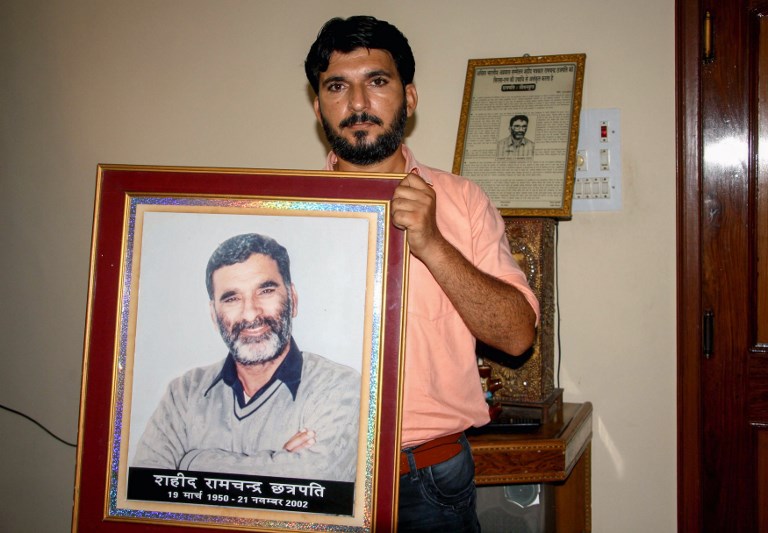
AFP
In September 2002, the Punjab and Haryana High Court took suo moto notice of the letter and ordered a CBI enquiry. “All of this was reported by my father. Every single development was followed up and reported in his newspaper,” said Anshul. A month later, Ram Chander Chhatrapati was shot outside his home and succumbed on November 21, 2002.
A 16-YEAR PURSUIT
From the beginning, the identity of the perpetrators was known to the police. The shooters had, the family later learnt, done quite a few recces and were aware of Chhatrapati’s routine. The shooter nabbed by the police, Kuldeep Singh, upon interrogation disclosed that he was from the cult and used a licenced revolver that belonged to a Dera employee Kishan Lal. Even the walkie talkie set the duo had used was licenced to the Dera. The other shooter was identified as Nirmal Singh.
On October 25, Ram Chander Chhatrapati underwent surgery and when he regained consciousness, gave a statement to the police naming Gurmeet Ram Rahim Singh as the prime suspect. Anshul Chhatrapati also gave a statement to the police. It was only in November, after performing the last rites connected with his father’s funeral that Anshul realised that the police had not included their statements in their First Information Report (FIR).
As Anshul recalled, “The Dera and the state government clearly had an understanding. The state government was putting pressure on the police to see that the Dera’s name must not be in the FIR; that the police’s needle of suspicion must be turned away from it.” The police even tried another old trick – to say that the shooting was due to a property dispute. But this did not wash.
“On November 23, 2002, the Chief Minister of Haryana come to my house and said that the culprits, however powerful, would be booked. But the exact opposite happened. There was no interrogation of the Dera head, the police didn’t bring in the Dera angle. In Sirsa, a movement led by the media called for a bandh (shutdown). Everyone joined in, citizens, political parties and lawyers,” Anshul said.
Finally, forced to concede by the fierce agitation of local journalists and citizens of Sirsa, the police held a press conference and declared that the Dera was suspected to be behind the shooting. But slowly, the movement became a victim of political pressure and apathy and gradually lost steam.
“So, I took on the mantle of the struggle for justice for my father. I wrote to the CM Haryana and demanded a CBI investigation. Ultimately, I had to knock on the doors of the court. On January 10, 2003, I filed a petition before the Punjab and Haryana High Court to demand a CBI investigation,” Anshul said, adding that it was not easy as the government cracked down on anyone who supported him or spoke against the Dera.
On July 31, 2007, a CBI challan (summons) was filed and the charge-sheet was finally filed in 2008. But for years thereafter, the accused would file applications in court on some pretext or the other. Between 2008 and 2017, the case came up several times and multiple applications were moved to delay the matter and intimidate the witnesses.
Anshul, who was a 21-year-old when his father died, took on the mantle of publishing the newspaper. It was difficult. His younger brother, who was 14 at the time, helped out because he had learnt to operate the computers in his father’s office. The family managed to survive from the income of their ancestral agricultural land but the long drawn out court case took its toll and they were forced to fold up the newspaper in 2014.
The period between 2013 and 2017 marked the growth of the Dera. Gurmeet Ram Rahim Singh gained immense political clout and amassed a lot of wealth. He began appearing on television, with his own morning show. He adopted blingy and flamboyant costumes and gave advertisements in the newspapers and, in his television programmes, was often dancing and singing with his followers. He even acted in two bio-pics celebrating his cult status.
Throughout, the case meandered along.
COURTING HOPE
The rape cases and the murder cases – of Ranjit Singh andof Ram Chander Chhattrapati – ran in tandem but the Dera managed to stall proceedings at almost every turn.
In 2003, Ranjit Singh’s father moved the High Court for a CBI investigation but the police said the two shooters were caught and the weapon recovered so there was no need for a CBI enquiry into his son’s murder. Finally, the court ordered a CBI investigation into all cases in November 2003.
Anshul acknowledges that the fight was possible only because of the support from well-known advocates who refused to charge a paisa. “We couldn’t afford a big lawyer. A supporter, Comrade Baldev Bakshi, got his son Ashwani Bakshi, a lawyer in the Punjab and Haryana High Court, and Lekhraj Dhot from Sirsa, to help us. The senior lawyer, RS Cheema, worked pro bono. In fact, the Dera people had approached him but he refused their brief. All of them put up the legal fight and stood by us throughout. We salute them.”
The Dera challenged the order of the CBI investigation in the Supreme Court in Delhi. Socialist leader Yogendra Yadav, who was well acquainted with Ram Chander Chhattarpati’s work and had met him in Sirsa barely a week before he was shot, stepped in to secure the offices of the respected former judge, the late Rajinder Sachar. The Dera petition challenging the CBI investigation was dismissed in November 2004.
The otherwise discredited CBI worked earnestly. “Apart from the murder cases, the rape cases were a shot in the dark. There was only an anonymous letter to go by. The CBI interrogated 18 girls. Only two came forward to file complaints. Their bravery must be commended. It is not easy. In one case, the in-laws were followers of the Dera so they threw the girl out. But her husband has stood by her,” said Anshul.
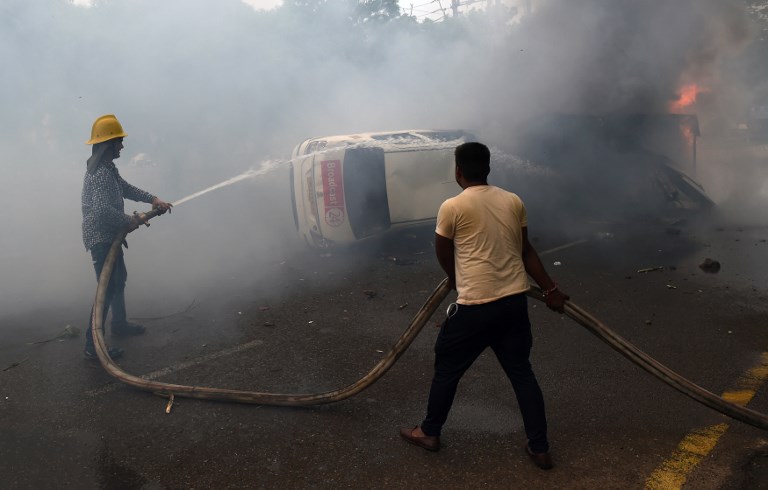
On August 25, the self-styled ‘godman’ Gurmeet Ram Rahim Singh was found guilt y by a special Central Bureau of Inves- tigation (CBI) court, on charges of rape and sexual assault of two female devotees. At least four outdoor broadcasting (OB) vans of media houses – NDTV, Republic TV, India Today and E24 – were toppled, damaged and burnt near the court premises in Panchkula, Haryana. At least 38 media personnel registered a complaint regarding loss of equipment and vehicles. Reporter Rakesh Kumar and video journalist Shipendar Happy from PTC News were attacked and robbed in Sirsa, near Dera Sacha Sauda, the headquar- ters of Ram Rahim Singh.Credit: Money Sharma/AFP
Intimidation, bomb threats and attempted assault followed, even as Gurmeet Ram Rahim was given Z plus security and moved around in a cavalcade of six cars with black window glasses. “Even the atmosphere in the court was so frightening when we used to go for hearings,” Anshul said. But the CBI investigating officer and its Superintendent of Police, Armandeep Singh, built a watertight case and withstood all the pressure, political and monetary.
Regrettably, while the local media stayed away from following up on the case, possibly due to fear, Anshul continued to use the media as much as possible, in the most innovative manner. He continually briefed the media with updates on the case, even small incidents and developments. He would write letters to the High Court, the Supreme Court and to the Prime Minister. When the media in Haryana stayed quiet, he approached the more responsive media in neighbouring Chandigarh. And, when the media was unable to cover the case, he made use of alternate and social media. The electronic channels stayed away. Several channels would approach him for information and he would share it, only to find dead silence. “The channels keep asking, give us something different, something the stories can run with. But tell me, what can be a bigger story than a media worker being murdered?”
Today, Anshul awaits an elusive justice that now seems nearer. “I feel huge regret. Time is a great healer they say, but I don’t think so. My sister and brother were younger, so I had to take over. I took on the challenge. I have to get justice for him.”
Resources
- IFJ South Asia Media Bulletin, February 2023 02/15/2023 Download
- IFJ South Asia Media Bulletin, January 2023 01/18/2023 Download
- Nepal Press Freedom report 2022 01/03/2023 Download


